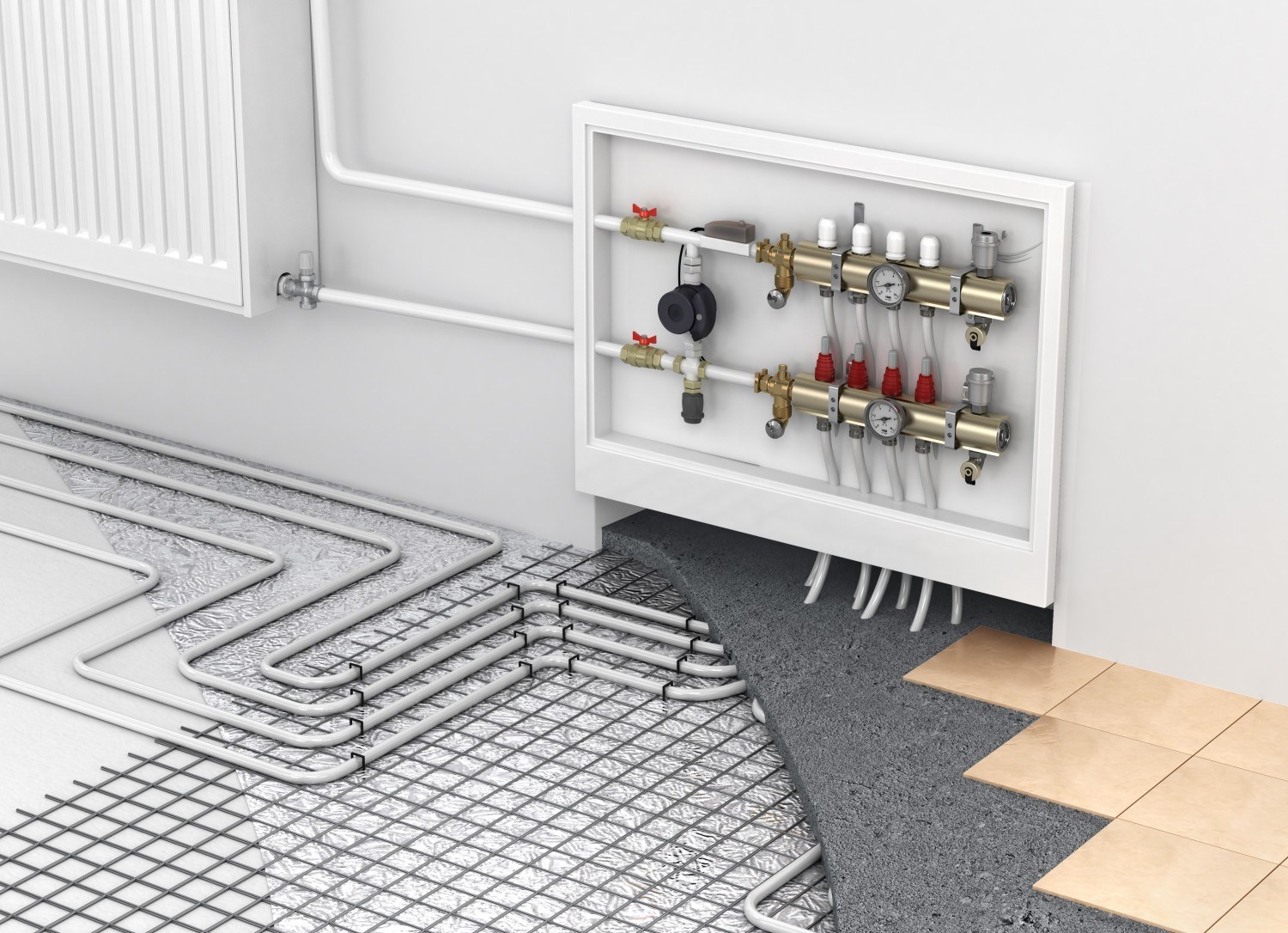People who have lived in older houses have all experienced the mid-winter chill that comes from stepping barefoot on the cold floor of a bathroom during the middle of the night. Hot air rises and the hard tile floors can be the hardest spot to warm up during a January night.
That’s where radiant floor heating packs the biggest wallop. We install water pipes under the floorboards or tile floor that is connected to a boiler. The water carries the heat through the pipes and it heats up the floor itself. We recommend using it with hardwoods or ceramic tiles, as those materials will retain the heat.
The beauty of the system is that the heat stays low where people need it the most, as opposed to other heating systems that mostly heat the air. Unlike other heating systems, there’s no hot stove or radiator that could burn a person, and people with allergies don’t have to worry about pollen or other allergens being distributed into the air.
Radiant floor heating can be installed in any room, but it’s much more economical to place it in new homes and expansions, as opposes to tearing up floors to retrofit existing rooms. Any covering that insulates the floor, such as a thick carpet, would lower the efficiency of the heating system, so floor options are limited.
But if you’ve taken one too many steps on cold tiles, or found yourself huddling close to the stove, consider the heating system that tackles your heating needs from the bottom up.








